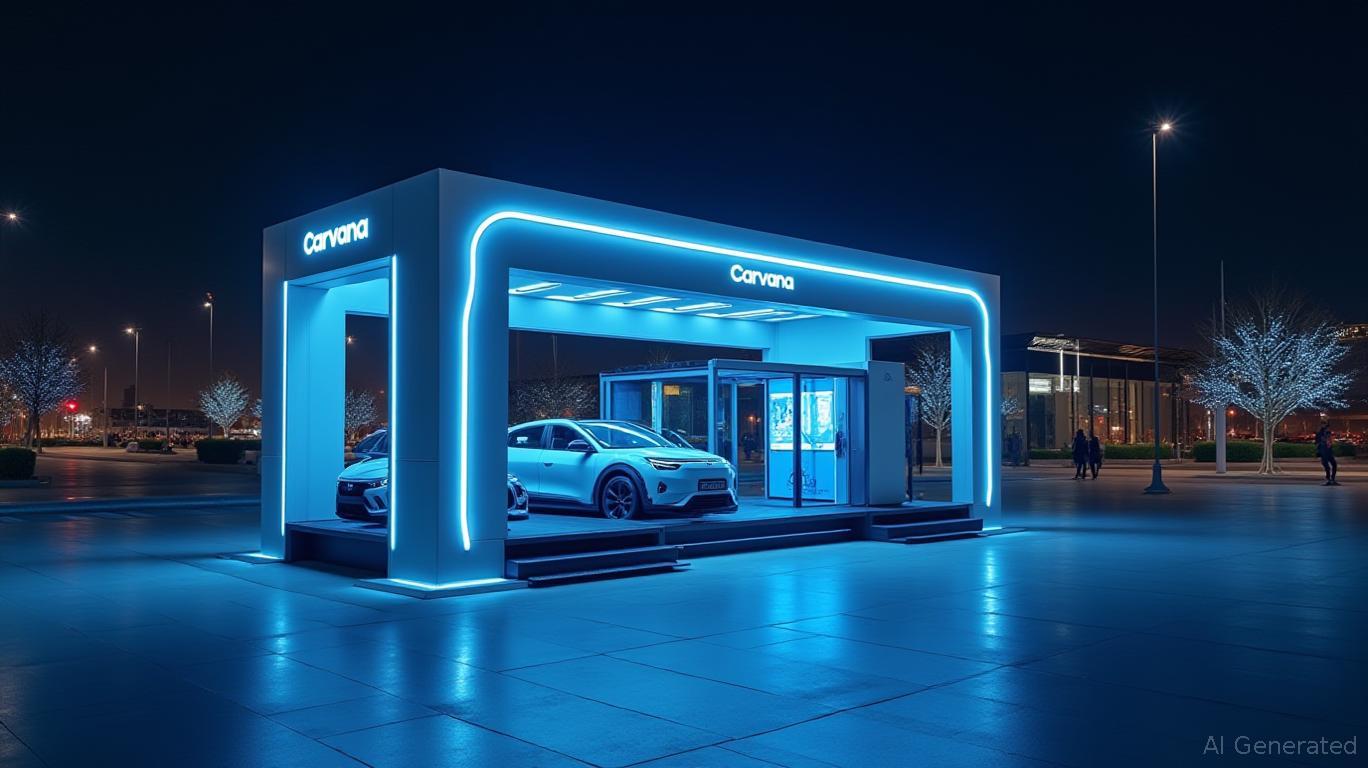Carvana's Rally: Buyable Turnaround or Tariff-Driven Mirage?
The U.S. automotive industry is at a crossroads. As tariffs on imported vehicles disrupt supply chains and reshape consumer behavior, Carvana (CVNA) has emerged as a beneficiary of shifting demand patterns. The company’s Q1 2025 results—133,898 retail units sold (up 46% YoY) and an 11.5% Adjusted EBITDA margin—have fueled a 9.6% stock surge, but the question remains: Is this a buyable turnaround or a trap set by transitory tailwinds? Let’s dissect the data.
1. The Tariff-Driven Tailwind: Temporary Surge or Structural Shift?
The 25% tariffs on imported vehicles (implemented April 2025) have created a perfect storm for Carvana. By making new cars 10%–15% costlier, tariffs have pushed buyers toward the used market, where Carvana dominates. Q1 2025 saw used car prices rise to a record 208.2 on the Manheim Index, with demand surging 13% YoY.
Ask Aime: "Is Carvana's Q1 2025 surge due to tariffs or structural shifts?"
But this tailwind is not indefinite:
- Supply Chain Resilience: Automakers like Hyundai and Volvo are accelerating U.S. production to avoid tariffs. Over time, this could reduce reliance on imports, easing pressure on used car prices.
- Policy Uncertainty: Retaliatory tariffs from Canada and the EU could destabilize trade, but tariffs themselves may be rolled back if political winds shift.

2. Operational Improvements: Beyond the Tariff Boom
While tariffs amplified demand, Carvana’s performance reflects lasting operational upgrades:
- Margin Expansion: The 11.5% EBITDA margin (up from 7.7% in Q1 2024) stems from:
- Lower Reconditioning Costs: Streamlined processes reduced expenses by $750 per retail unit.
- ADESA Synergies: The wholesale auction platform now fuels $964 in wholesale GPU, boosting inventory turnover.
- Unit Growth Consistency: Four straight quarters of >30% YoY unit growth suggest demand isn’t purely tariff-driven.
3. The 3M-Unit/13.5% Margin Target: Realistic or Overambitious?
Carvana’s long-term goal—3 million annual units at a 13.5% EBITDA margin within 5–10 years—is its most critical test. Here’s the math:
- Growth Feasibility: At its current 46% YoY pace, Carvana would hit ~2.1 million units by 2026. Scaling further requires:
- Expanding into underserved markets (e.g., rural areas) and competing with traditional dealers.
- Maintaining a customer Net Promoter Score (highest in three years) to retain loyalty.
- Margin Stretch: The 13.5% target is achievable if:
- Cost Leverage: Fixed costs (e.g., logistics, tech) absorb rising unit volumes.
- ARPU Stabilization: The 5.1% YoY drop in average revenue per unit must reverse or stabilize.
4. Valuation: High Multiples vs. Scaled Fundamentals
Carvana’s stock trades at a 163x P/E multiple—far above peers like Lemonade (LMND, 45x P/E) or Vroom (VRM, 17x P/E). While growth justifies some premium, risks loom:
- Debt Burden: A 4.8 debt-to-equity ratio raises concerns about cash flow stability.
- Margin Sustainability: Achieving 13.5% EBITDA requires no margin compression despite scaling.
- Market Saturation: Used car demand may cool as new car affordability recovers post-tariff.
Conclusion: Buy the Momentum, but Watch the Valuation Ceiling
Carvana’s Q1 results are real and transformative, driven by both tariffs and operational excellence. The 11.5% EBITDA margin and 46% unit growth suggest a sustainable path to its 3M-unit target—if it can retain pricing power and manage debt. However, investors must weigh:
- Upside: Tariff-driven demand and infrastructure scale could push margins toward 13.5%.
- Downside: Overvaluation and macro risks (e.g., a recession) could crimp growth.
Final Call: Carvana is not a slam-dunk buy at current prices, but its long-term thesis holds water. Investors should wait for a pullback (e.g., below $100) or prioritize a staggered approach. For now, the rally is buyable—but not yet bulletproof.
Disclaimer: Past performance is not indicative of future results. Consult a financial advisor before making investment decisions.










